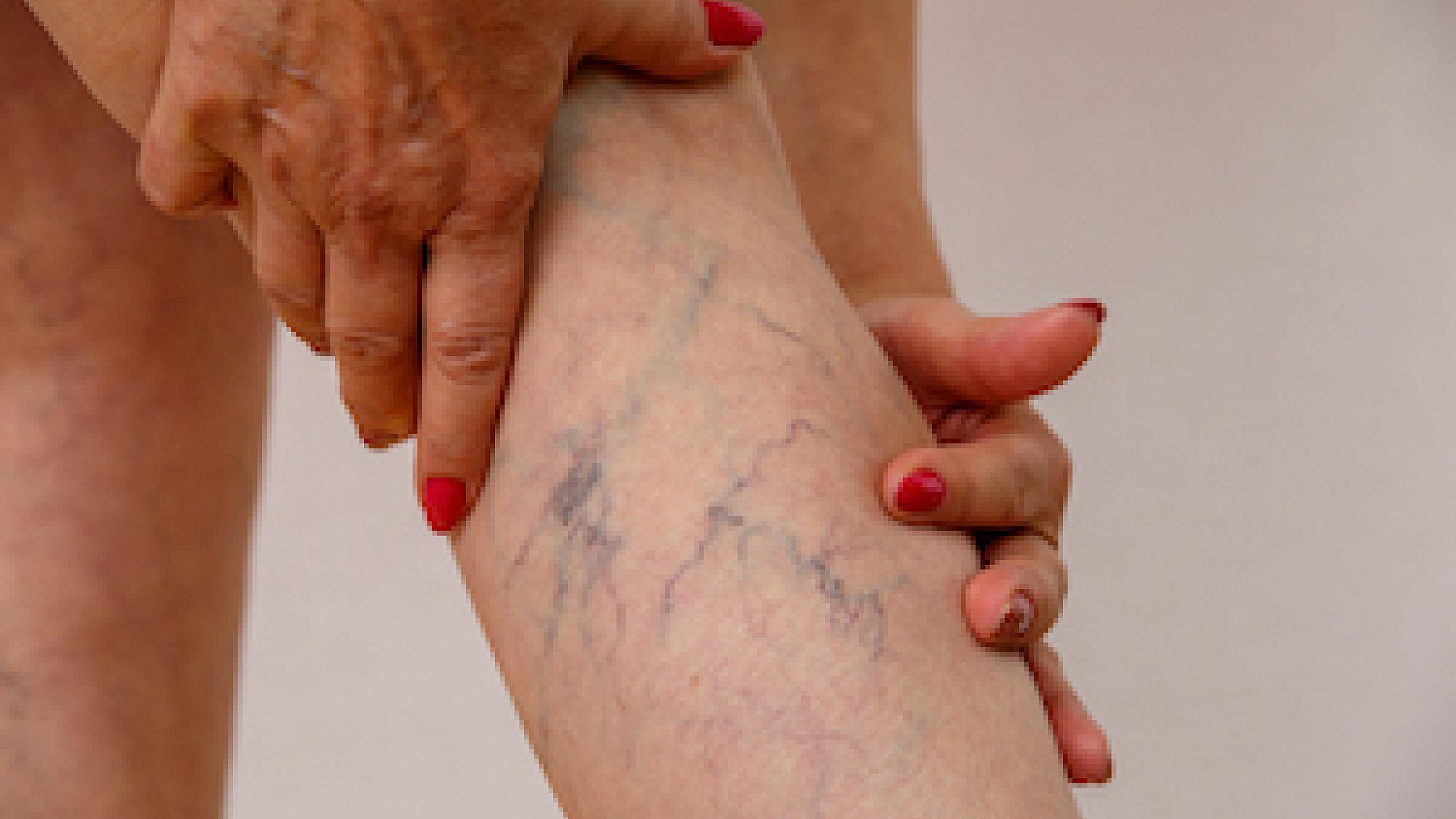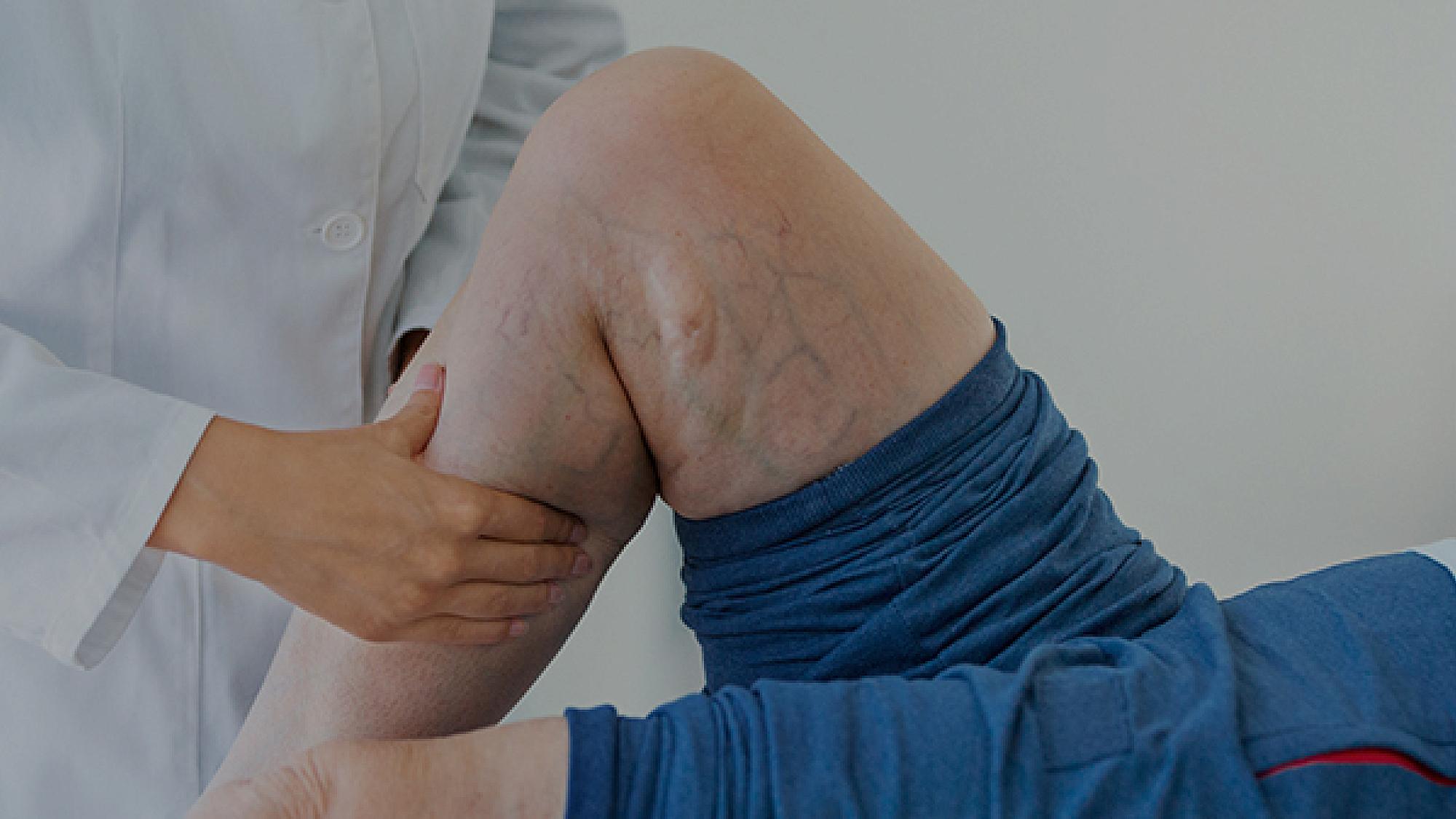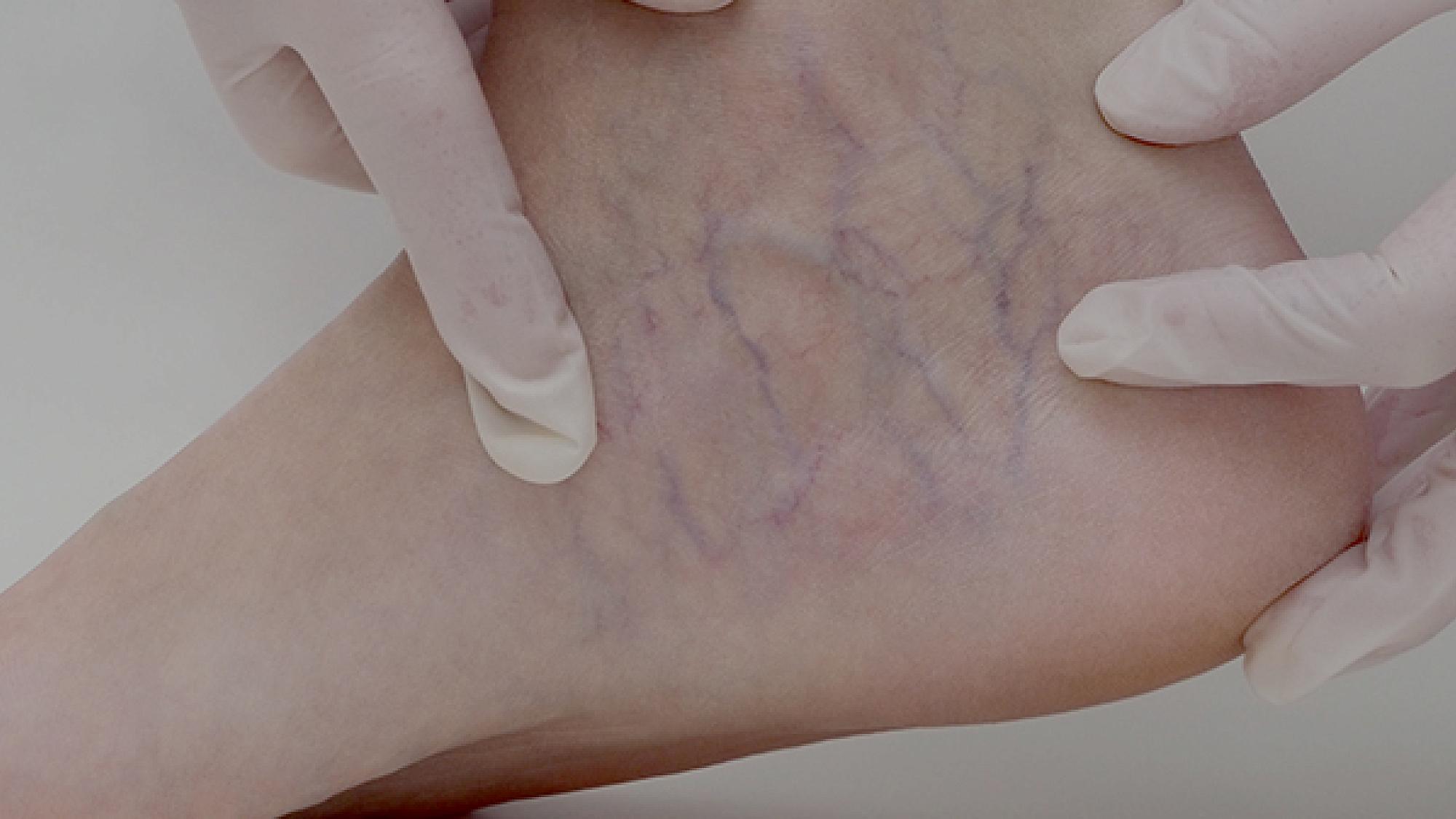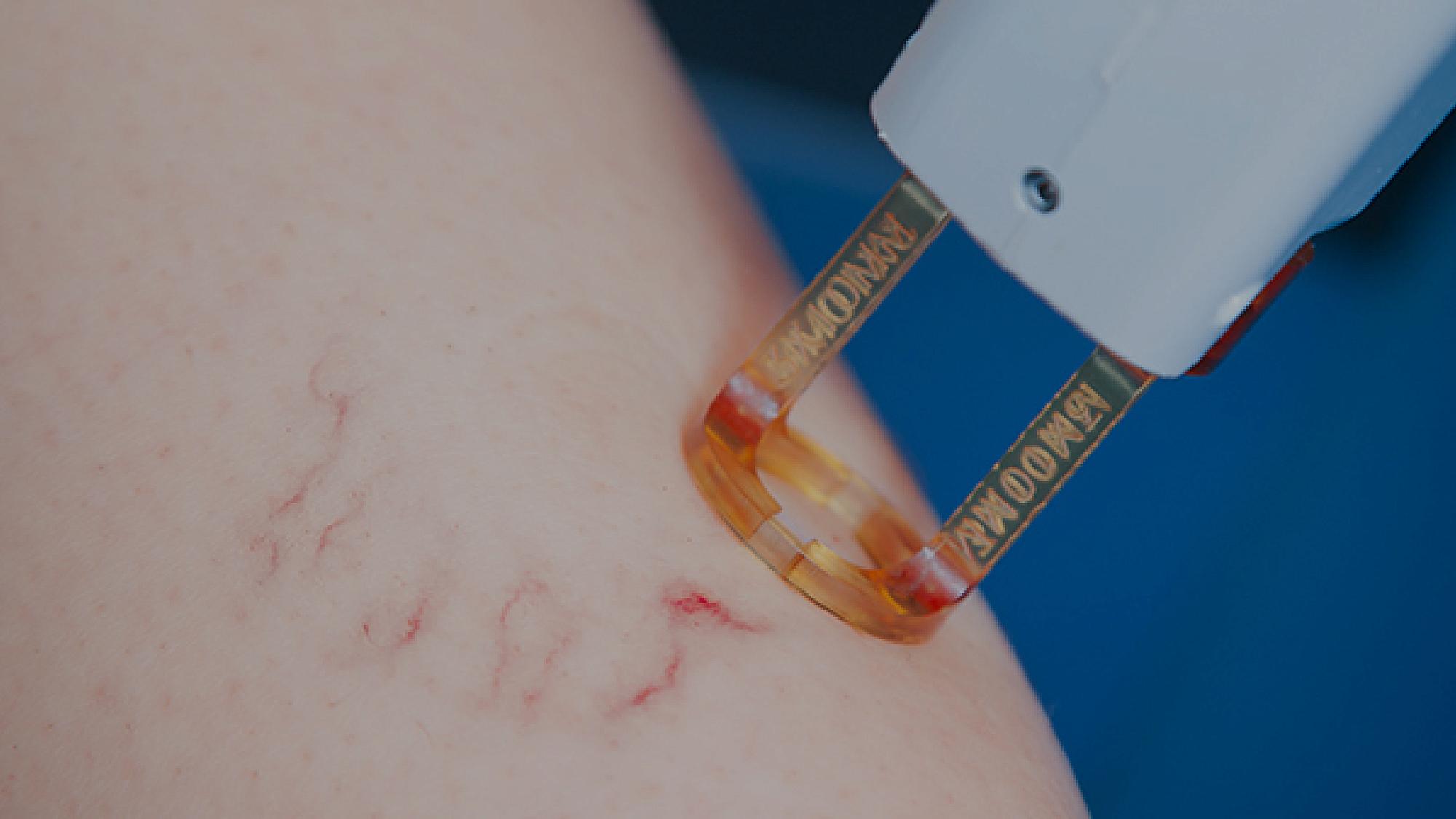
Vein Treatment & Management
At University of Utah Health, our specialists in Heart & Vascular Services and Cosmetic Services provide leading-edge, high-quality patient care for vein treatment.
For serious cases of varicose veins, our board-certified vascular surgeons specialize in minimally invasive surgical procedures if necessary. Our vascular surgery team will find you the most effective treatment to address the underlying cause of your varicose veins. Our highly trained dermatologists in aesthetics offer cosmetic treatments to reduce the appearance of spider veins and small varicose veins.
Why Do Varicose Veins and Spider Veins Look Alike?
Varicose veins appear as twisted lumps that bulge out of your skin. They are either the same color as your skin or a reddish color. You'll often find them on your legs in larger superficial veins (veins close to the surface of your skin). Varicose veins are often a sign of underlying health problems such as venous insufficiency.
Spider veins affect the smaller veins and capillaries near your skin’s surface. These types of veins are typically not a sign of more serious condition. Unlike varicose veins, spider veins will spread out into a web-like pattern under your skin.
If you have spider veins, you'll also notice they are:
- smaller,
- flat or slightly raised, and
- a darker blue or red color.
Varicose Vein Pain
Varicose veins can sometimes cause pain along with other mild or more serious symptoms, including:
- itching,
- burning,
- swelling in your legs or ankles,
- aching or pressure in your lower back, or
- an achy, heavy feeling in your legs.
Spider veins are usually painless, but you may experience itching or slight discomfort.
What Causes Varicose Veins and Spider Veins?
Varicose veins are the result of venous insufficiency — a condition that occurs when the valves in your veins do not pump blood properly back to your heart. It's most common in your feet and legs. Spider veins occur when the small valves in your veins stop working or when tiny blood clots form. As a result, blood will collect inside, which eventually causes enough damage to burst the vein.
Anyone can develop varicose veins or spider veins, but some factors put you at higher risk for these conditions, including:
- family history of varicose veins or spider veins;
- age (your vein valves will get damaged as you get older);
- being pregnant or overweight (weight gain puts a strain on your vascular system);
- sitting or standing for too long, which can lead to blood pooling in your legs and feet;
- being female (spider vein risk factor);
- skin damage from the sun (spider vein risk factor); and
- forceful pressure from activities like childbirth, sneezing, or vomiting (spider vein risk factor).
When to See a Doctor
Varicose vein symptoms are often signs of underlying blood flow issues, such as venous insufficiency (when the valves in your veins don’t work properly). If varicose veins are left untreated, they could grow large enough to break through your skin and bleed.
If you have any signs and symptoms of varicose veins, seek help from a doctor right away. Early treatment will keep your varicose veins from getting worse and slow down the venous disease progression. Seeking care from a vascular surgeon early will also give you more treatment options for non-surgical or minimally invasive surgery.
When to Seek Cosmetic Treatment for Veins
Most people do not experience any symptoms or only have mild discomfort from spider veins. Patients who seek cosmetic treatment from our dermatologists for spider veins or small varicose veins typically want to minimize their appearance.
Varicose Vein Treatment
The type of varicose vein treatment you need depends on the underlying reason for your venous insufficiency and your anatomy. Our vascular surgeons will conduct a detailed health history and physical exam to understand your needs. They may order an ultrasound to look at blood flow and valve function in your veins.
Compression Socks
Wearing compression socks will improve blood flow in your legs and help prevent varicose veins. Many insurance providers will require you to wear compression socks for three to six months first before approving you for more advanced vein treatments. Getting compression stockings from a vascular surgeon is better than buying them at a retail store because you will get a comfortable fit and the proper level of compression for your needs.
Laser Treatment
During this minimally invasive treatment, our vascular surgeon will put a catheter (long, thin tube) into your vein through a small incision (cut) in your skin. The surgeon will use an ultrasound to see your veins so they can guide an instrument to the damaged vein. Once there, they will create blood clots using heat energy to close the vein off. After the vein clots, blood will not be able to flow through the damaged part of the vein anymore. In time, other healthy veins in your legs will take over.
Minimally Invasive Surgery Options
If it's appropriate for the patient, our vascular surgeons will typically perform the following two procedures at the same time.
How to Prevent Varicose Veins & Spider Veins
The best ways to prevent varicose veins and spider veins include the following:
- Regular exercise to improve blood flow and strengthen your circulation.
- Maintaining a healthy weight because extra weight puts pressure on your veins and makes it harder to pump blood back to your heart.
- Wear compression stockings to ensure proper blood flow out of your legs. You can wear them every day or as needed. Compression hosiery is also available if you cannot wear stockings.
- Do not stand or sit for long periods of time.
- Elevate your feet for 15 minutes above your heart at least three times a day. Gravity will help the blood flow out of your legs and feet.
Keep in mind that you may still develop varicose veins or spider veins due to your age or family medical history.
Schedule a Vein Consultation
Schedule a consultation with one of our providers if you are concerned about your veins. If you're not sure whether you have varicose veins or spider veins, call 385-881-8923 to speak with one of our staff who will help you determine which specialist to see.
Insurance Coverage
You do not need a referral from a primary care provider (PCP) to see a vascular surgeon, but some insurance plans require that you get a referral from your PCP before seeing a specialist. Contact your insurance provider with questions.
Most insurance plans do not cover cosmetic procedures for spider veins or varicose veins.




